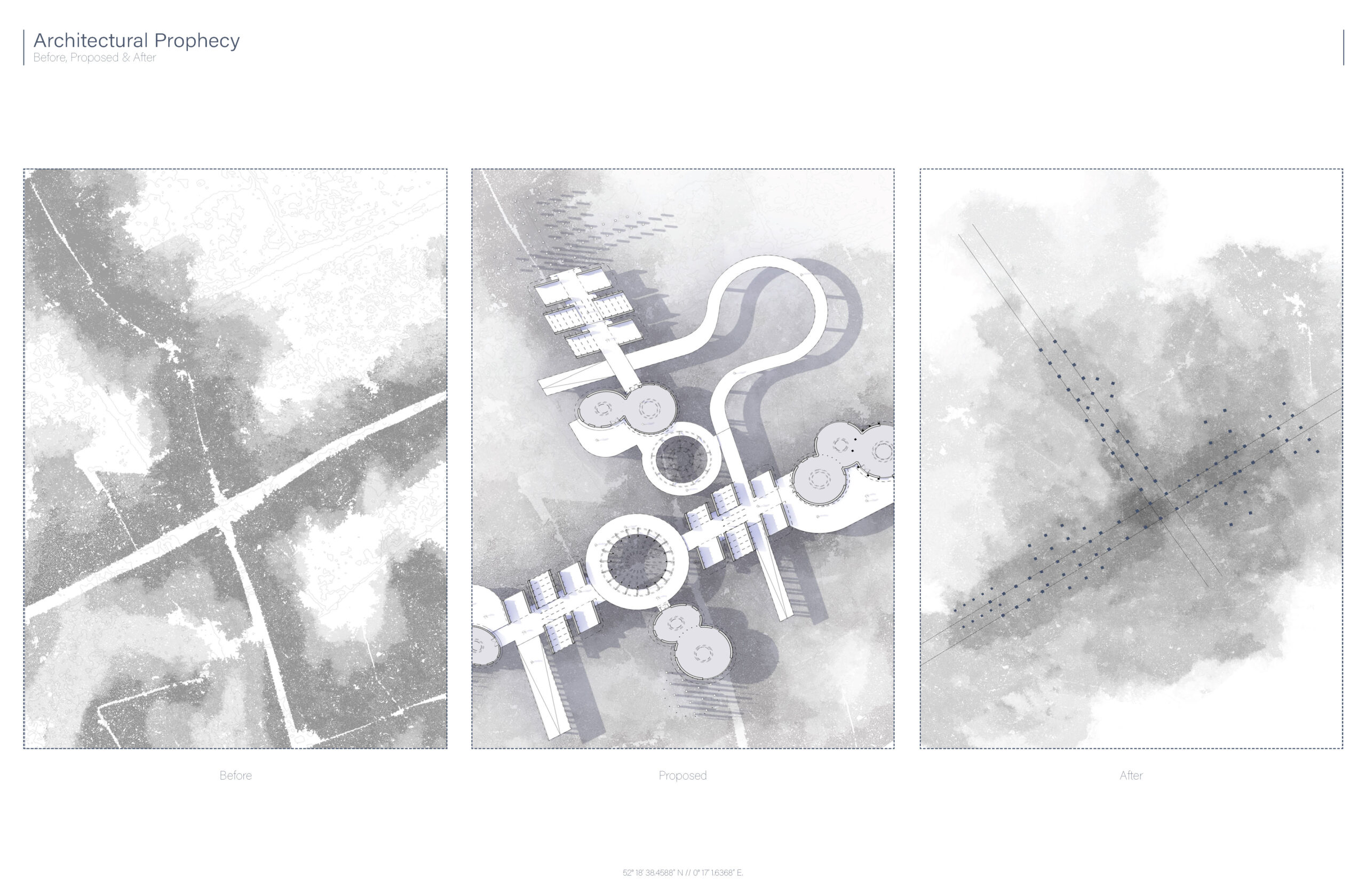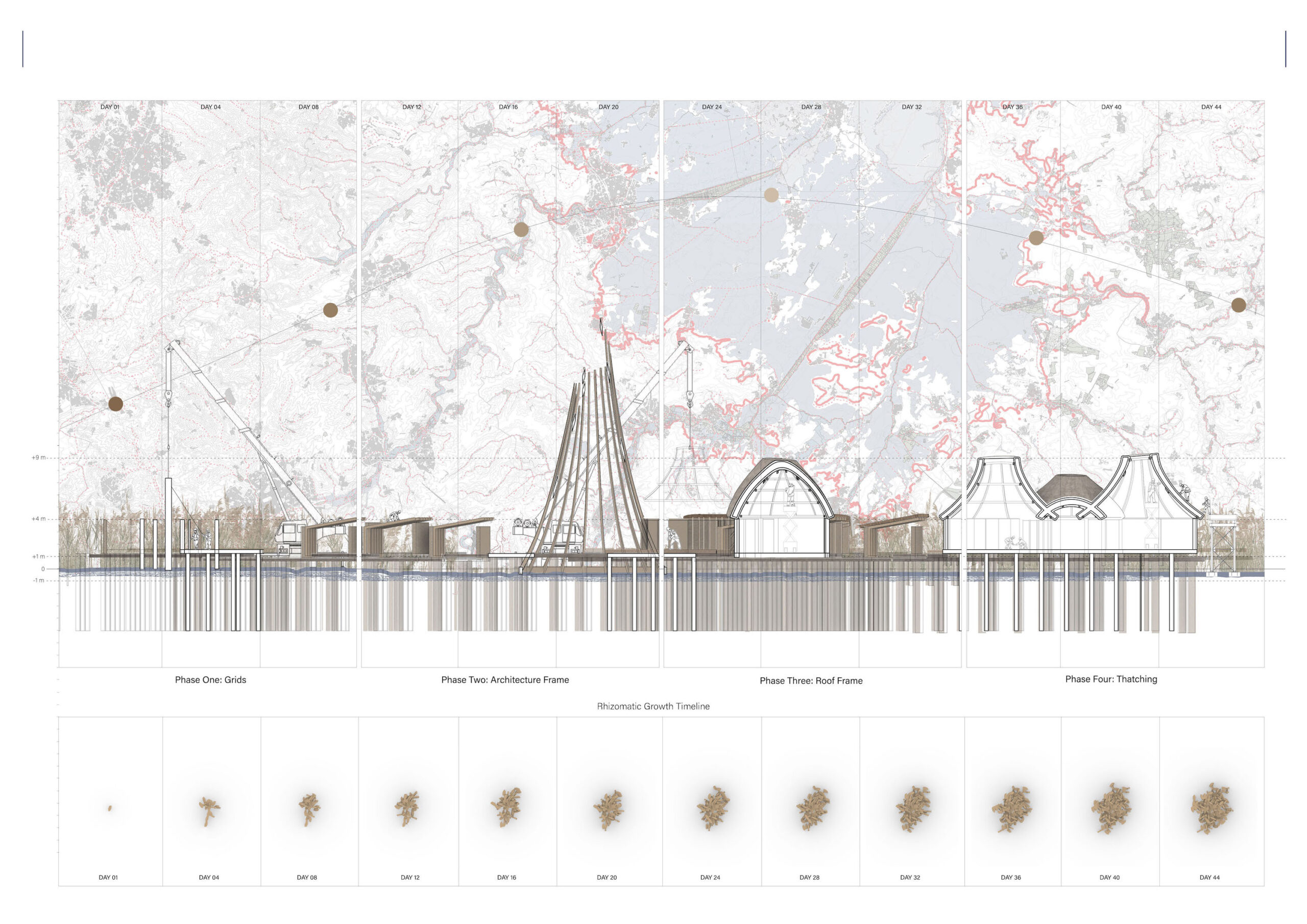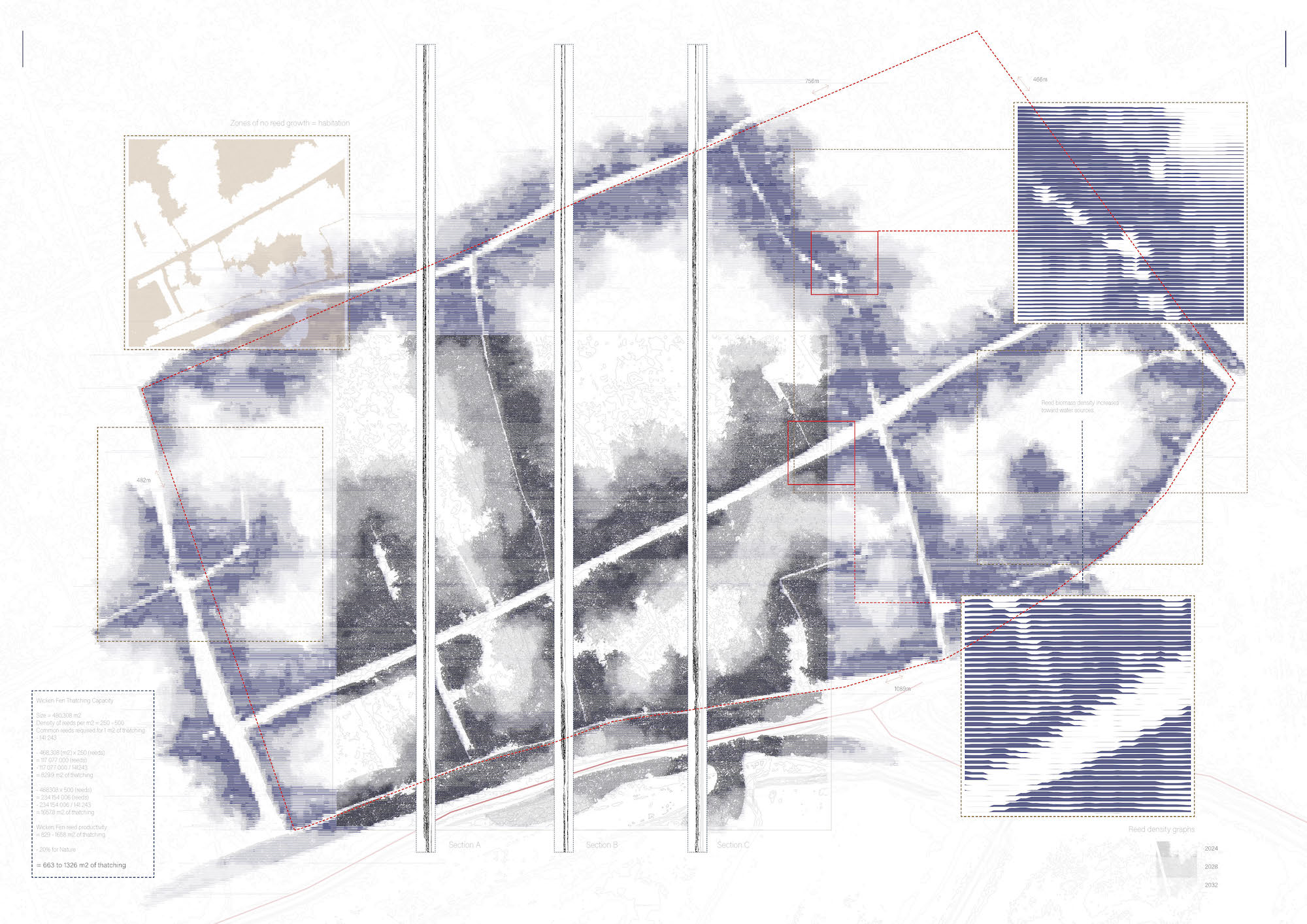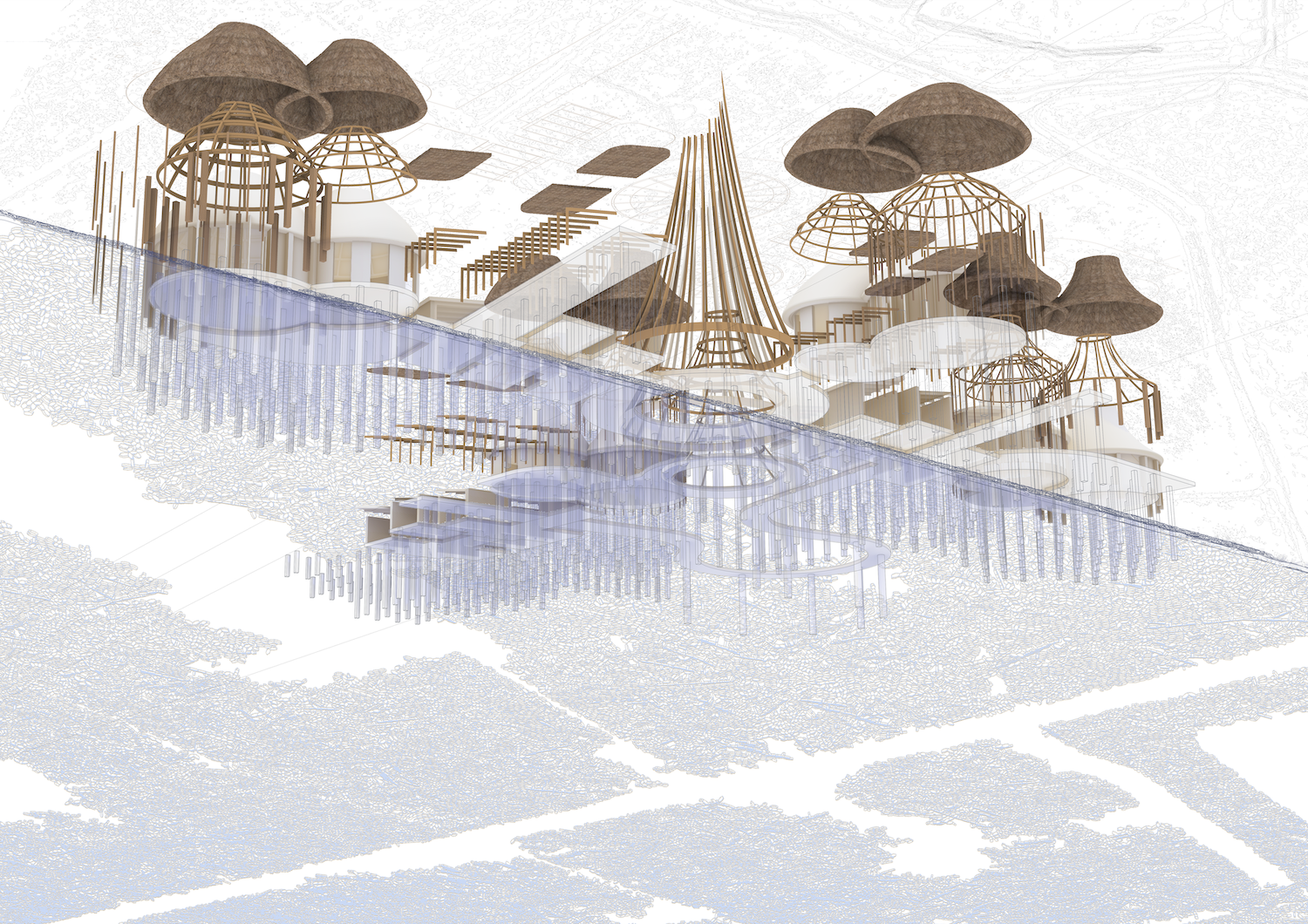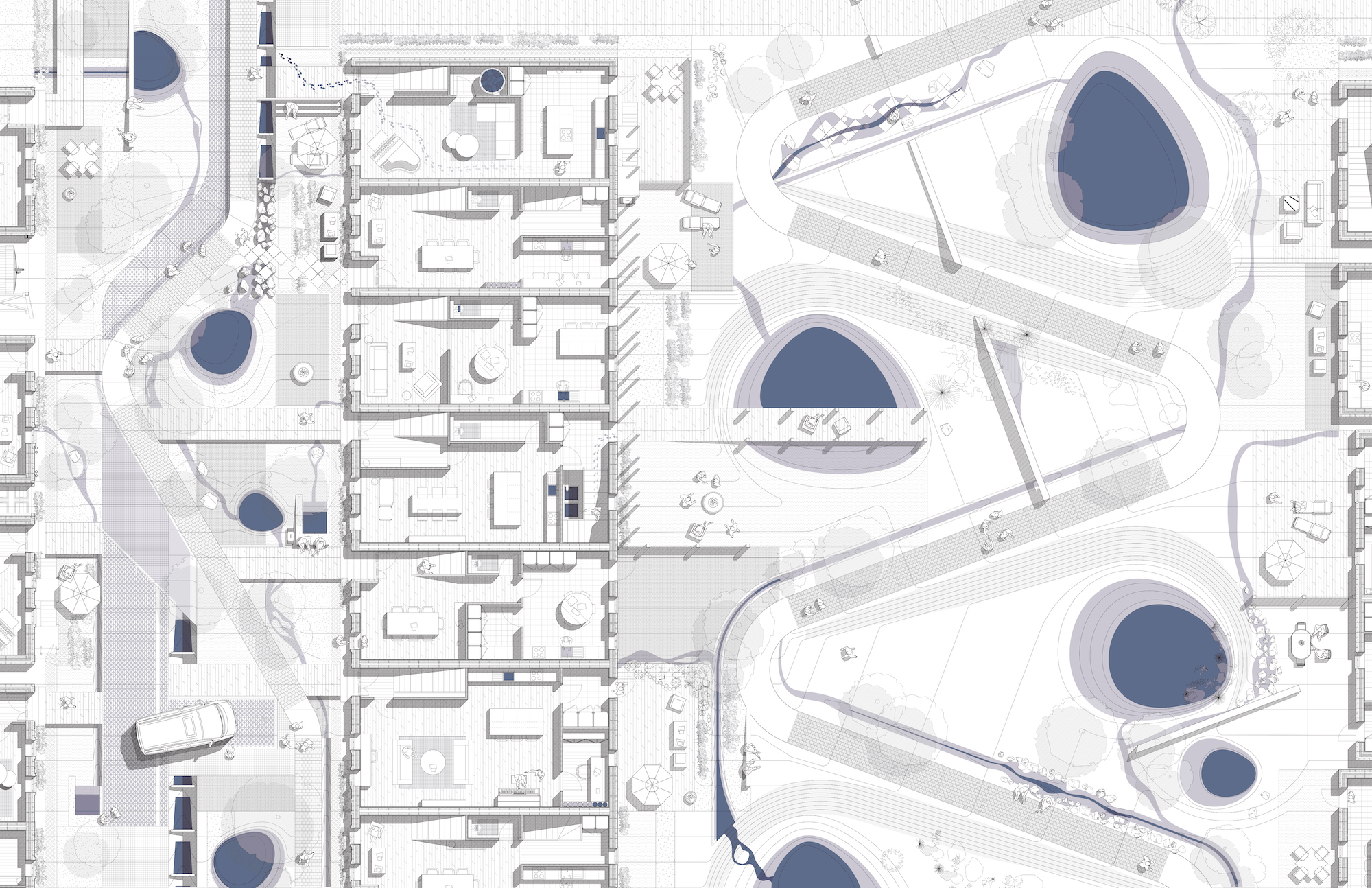R.E.A.P Reed Extraction & Post-production Mill
Due to rising sea levels and climatic trajectories reshaping the landscape, the UK Fenlands has observed shifting boundaries of rhizomatic growth (the roots of the Reeds). The reedbeds are both ecologically diverse and an economic source for the UK thatching industry. Despite the vast resources of Norfolk Reed found across the Fens, the UK imports 97.4% of thatching biomass from China, Ukraine, Turkey and Romania. Consequently, the UK’s reed architecture carries a high amount of embodied carbon before construction begins and contributes to extracted landscapes overseas. Reedbeds serve the local biodiversity and Avarian migration patterns and help regulate sediment flow, filtrate water pollutants, and store carbon. As such, their presence in the Fenlands is imperative for the survival of wildlife whilst also being a renewable construction material offering thermal, acoustical and waterproofing properties.
Located in Wicken Fen, this project focuses on harvesting, growing and strategising the landscape to ensure the Reedbeds are sustainably and socially sourced for application in the construction industry. The project also conserves the landscape, allowing the reeds to perform as carbon stores and control the flow of sediment across the landscape. As part of the architectural program, it also operates a Thatching College that educates the craftsmanship of thatching to ensure the artisan trade continues. Due to seasonal trends of reed harvesting the building is adaptable in its inhabitancy but also the way its positioned in the landscape. Once the reedbeds have been restored the architecture retreats leaving only its grids as anchors for the reedbeds.
Bradley’s work explores processes and systems within nature as a tool for discovering new biophilic architectural understandings. His academic studies are grounded by the creative inquiry into biocentrism. His latest project ‘R.E.A.P’, sources regenerative materials for the construction industry while remediating landscapes depleted by climate change and increasing planetary pressures.



